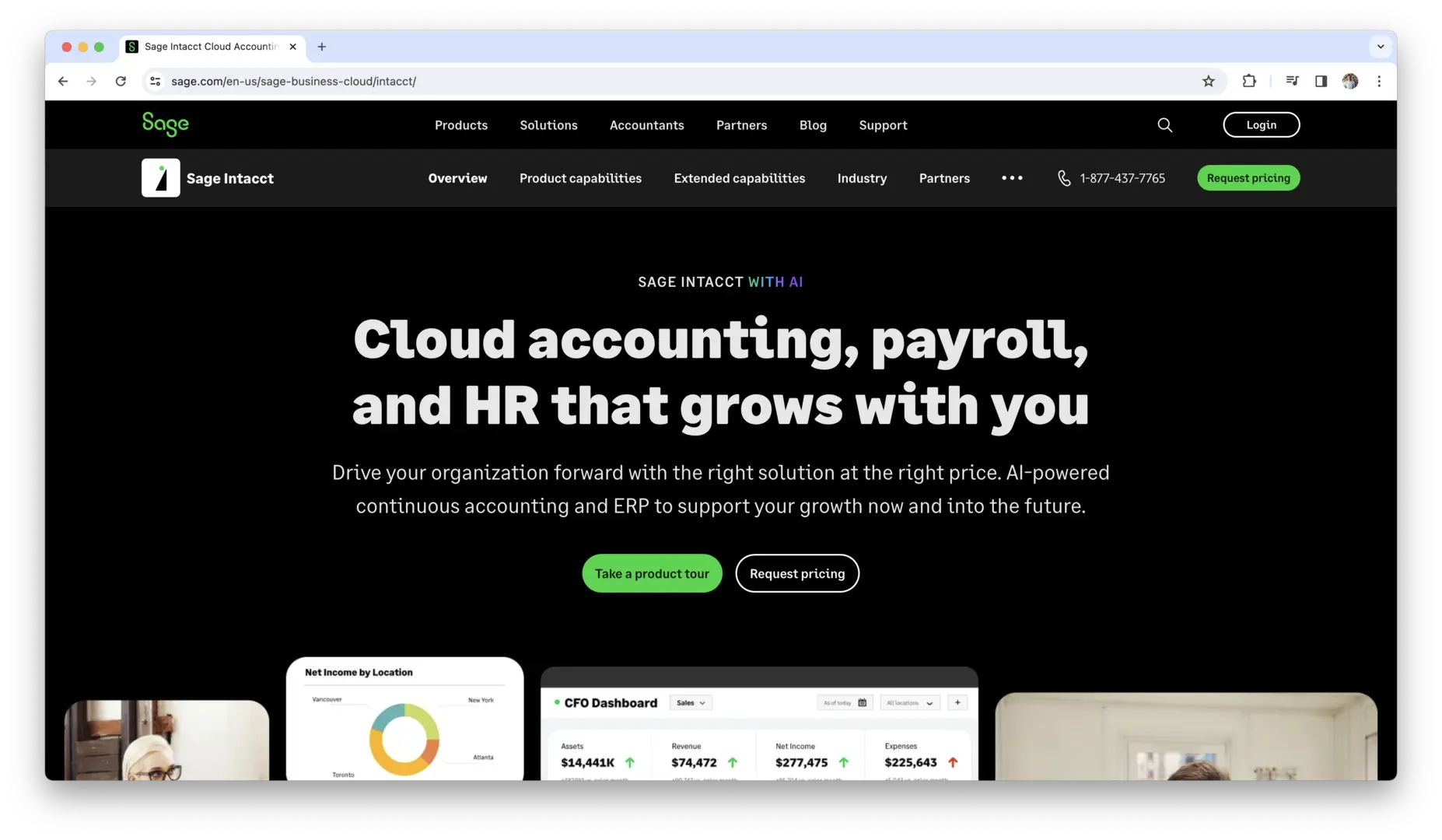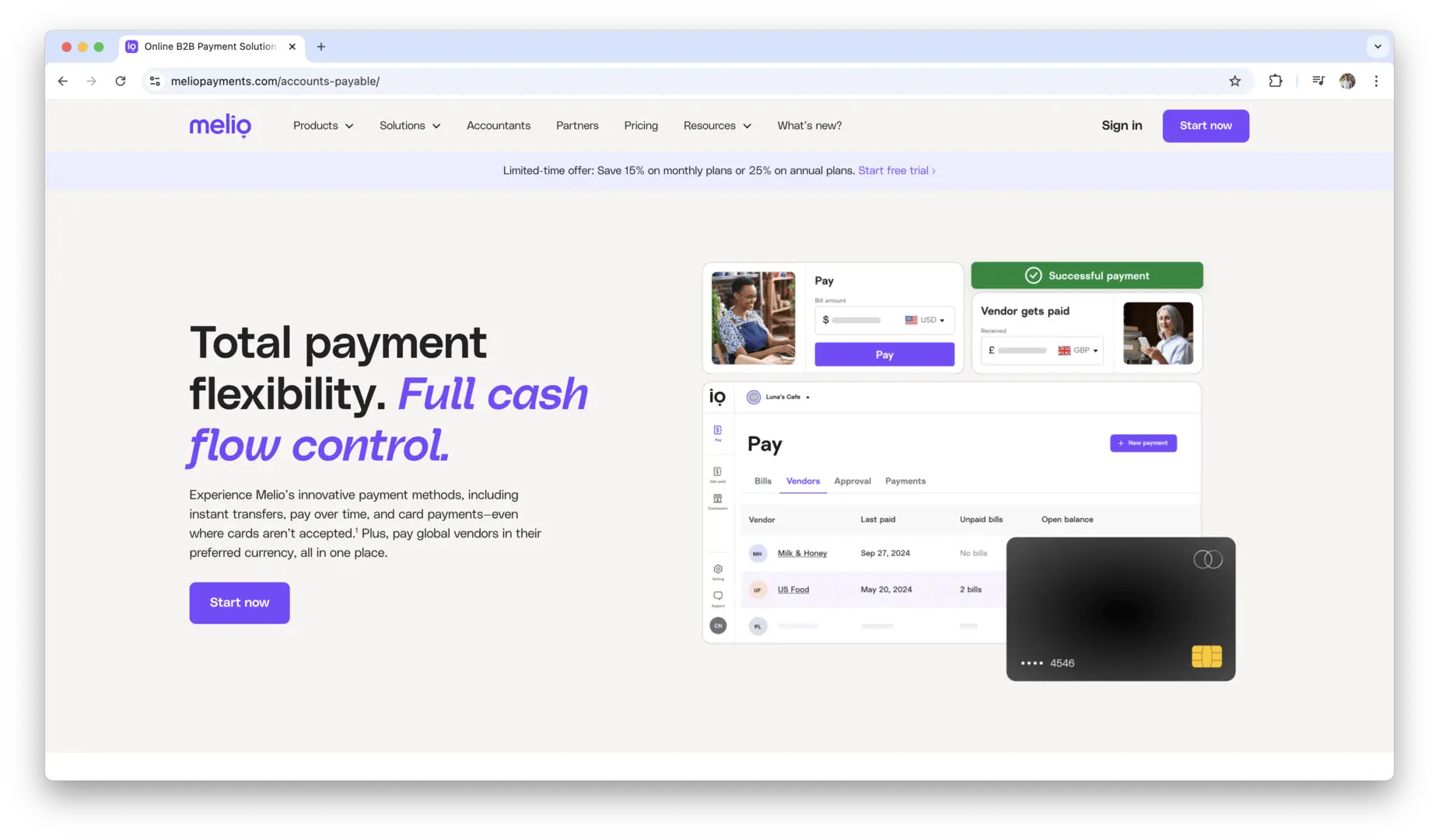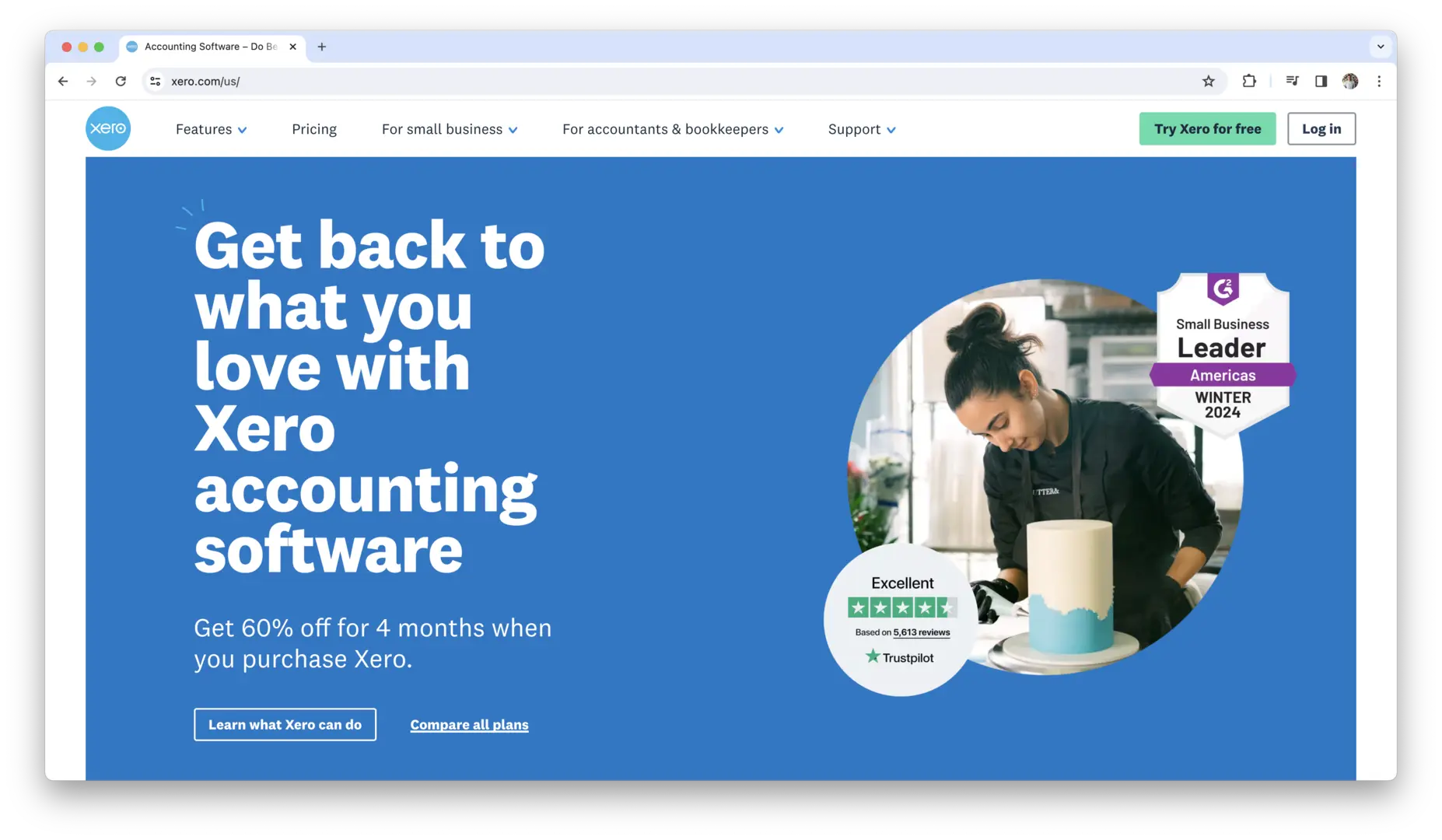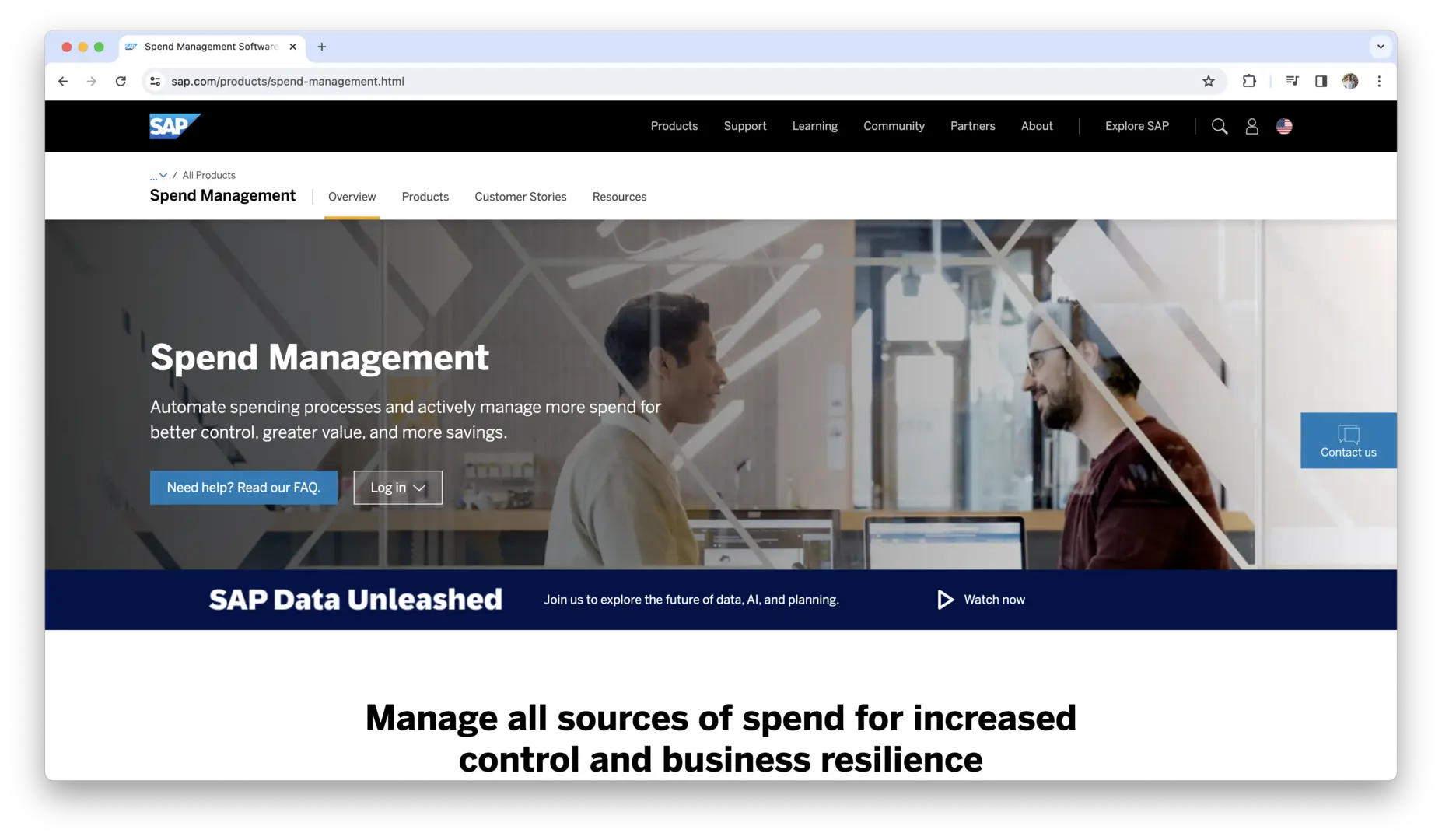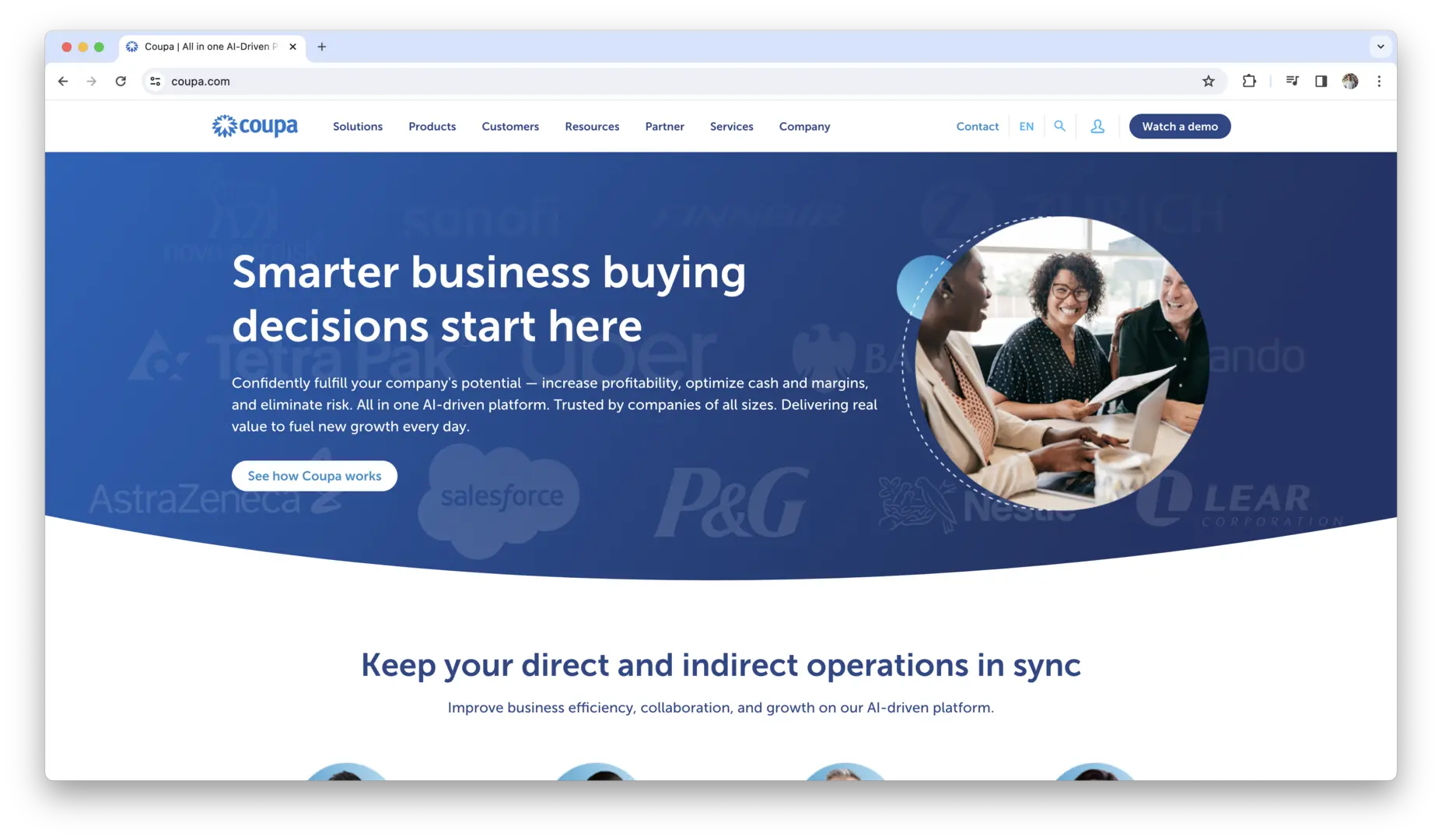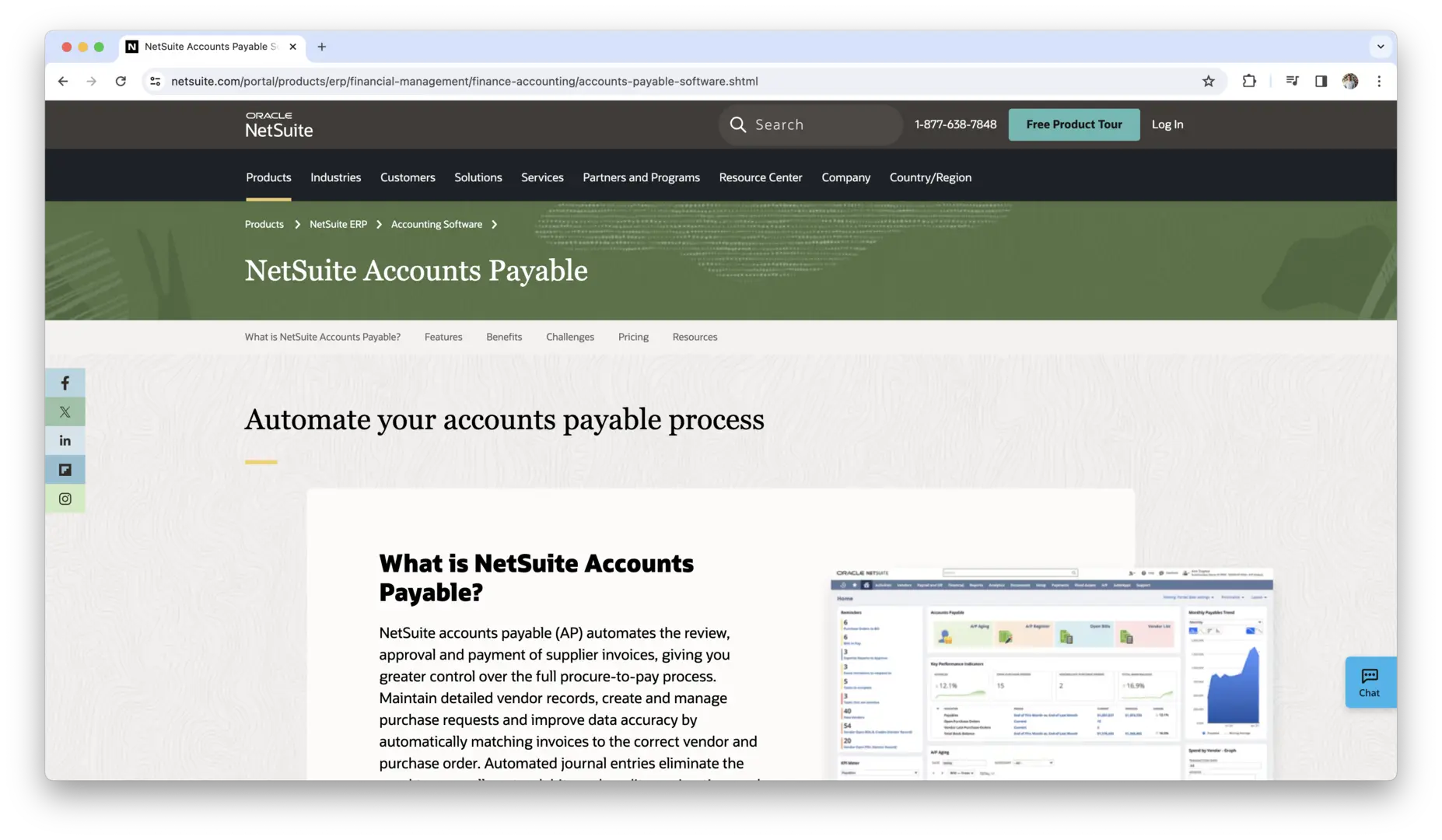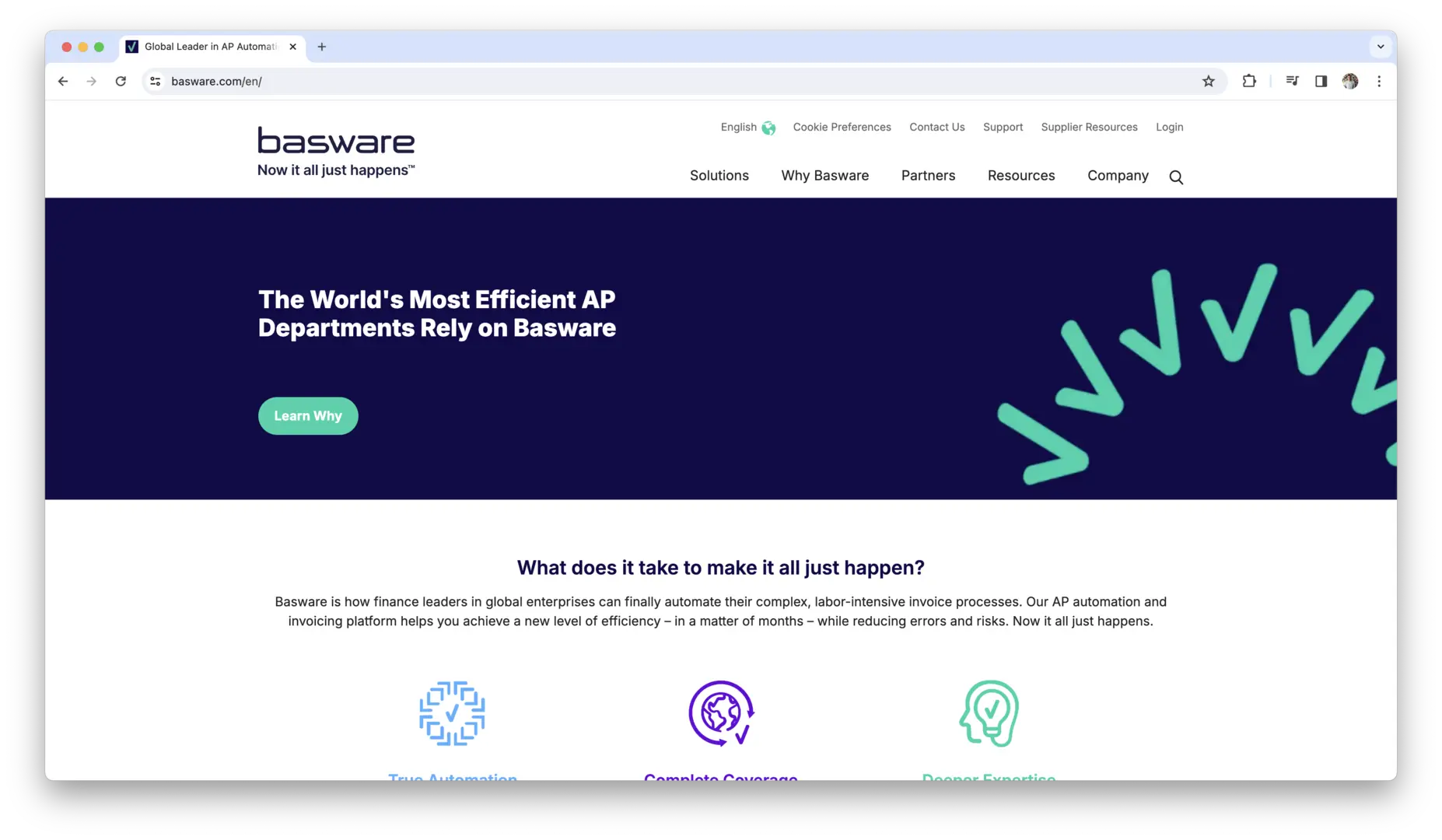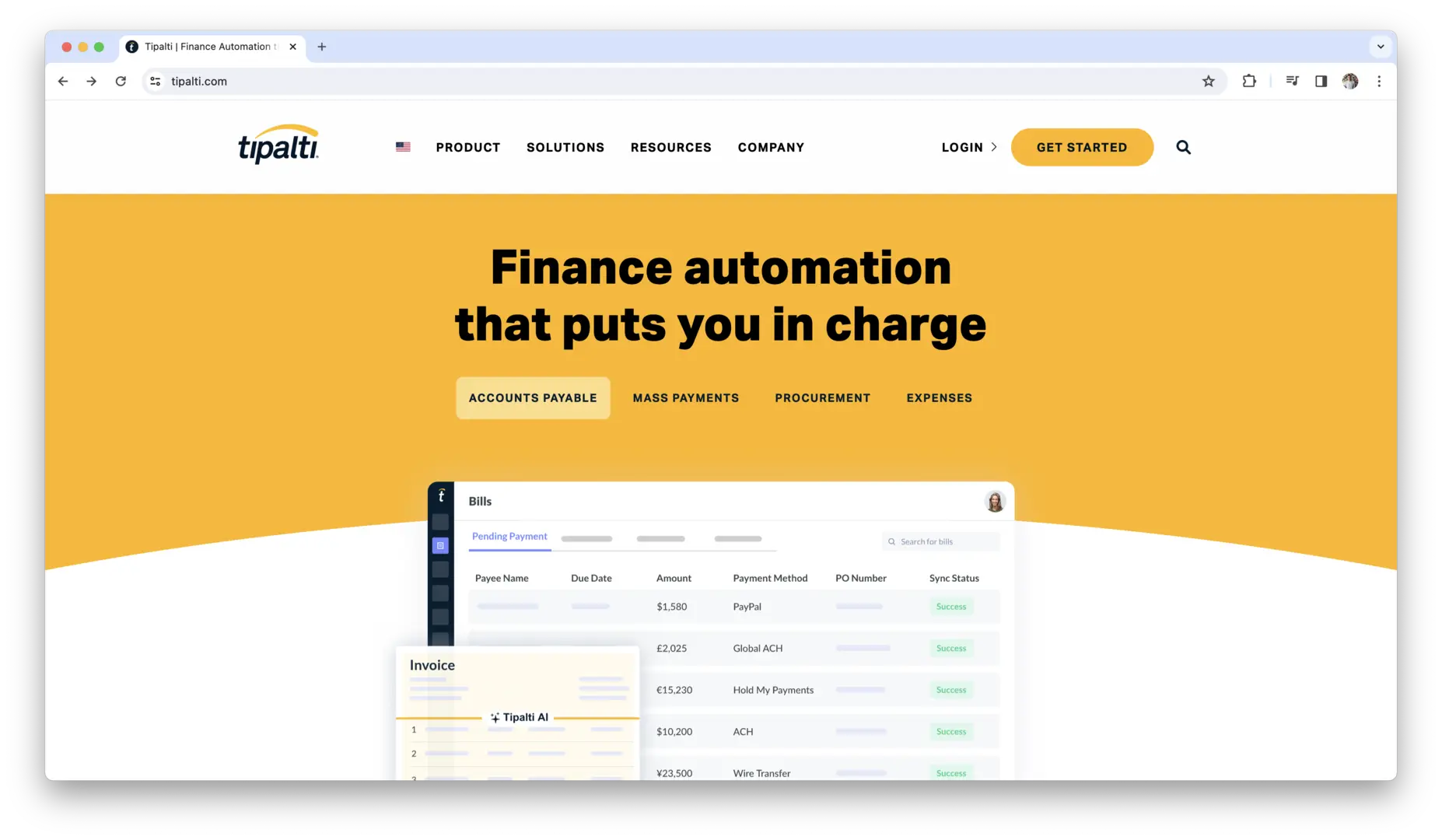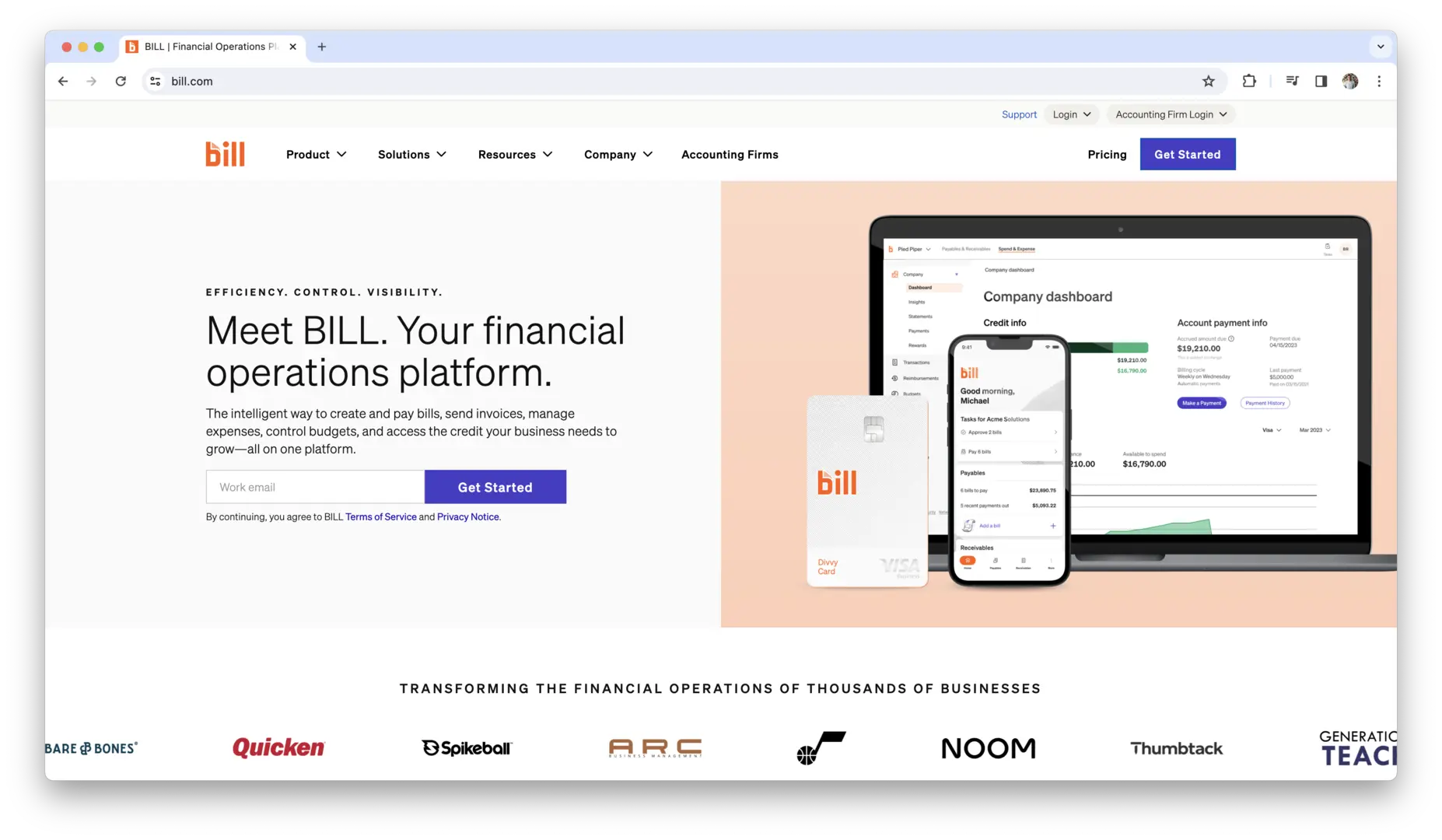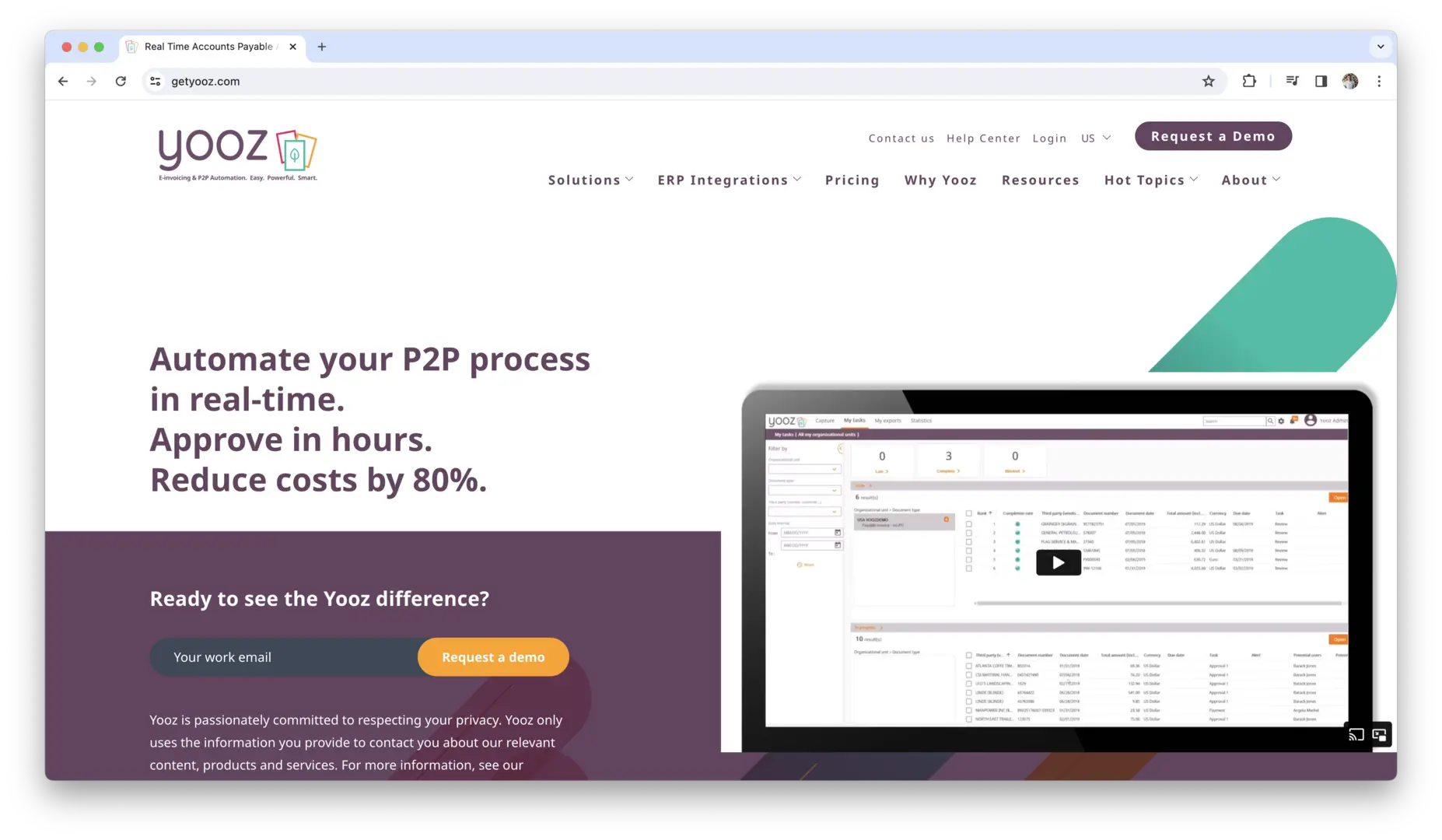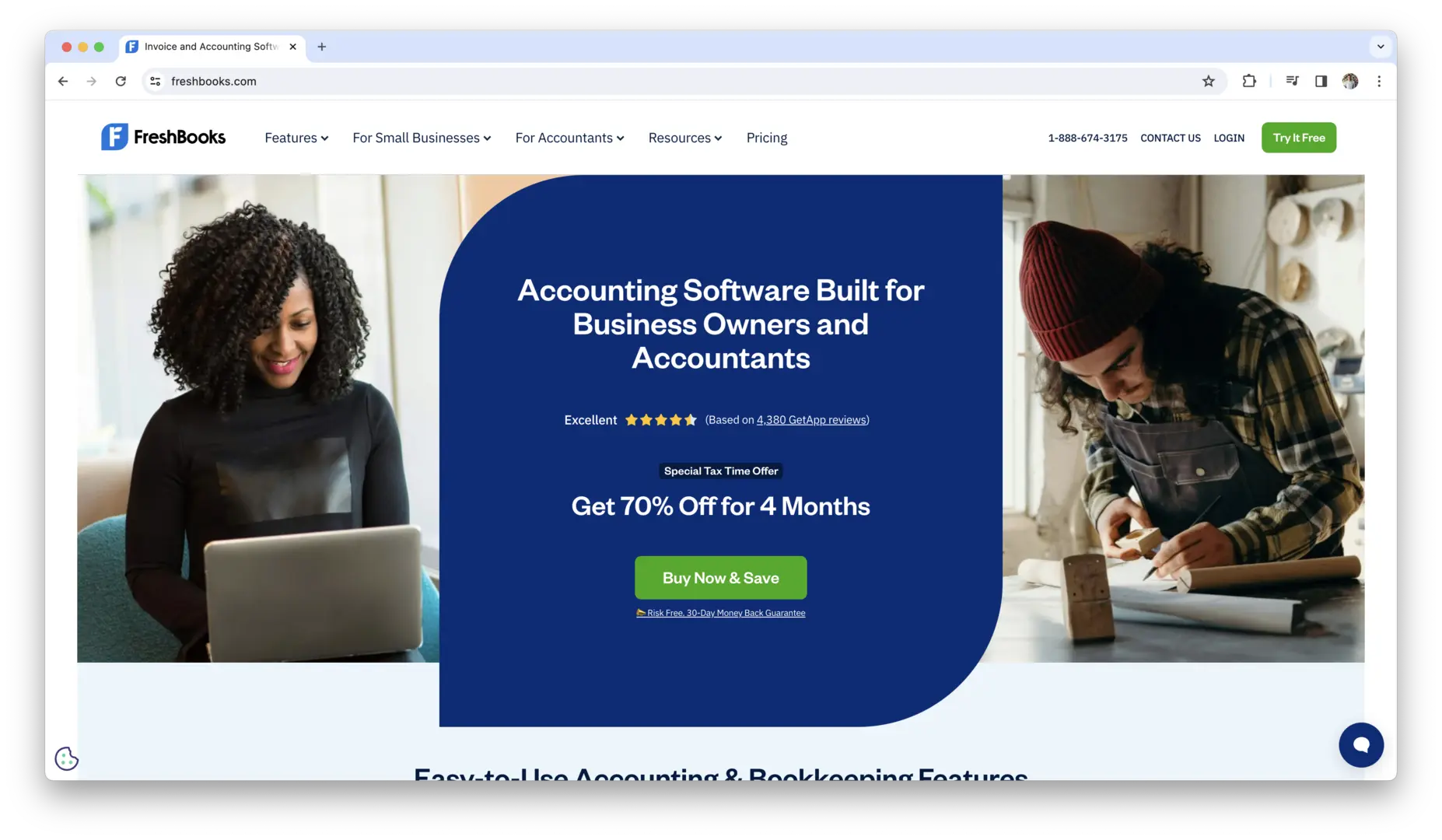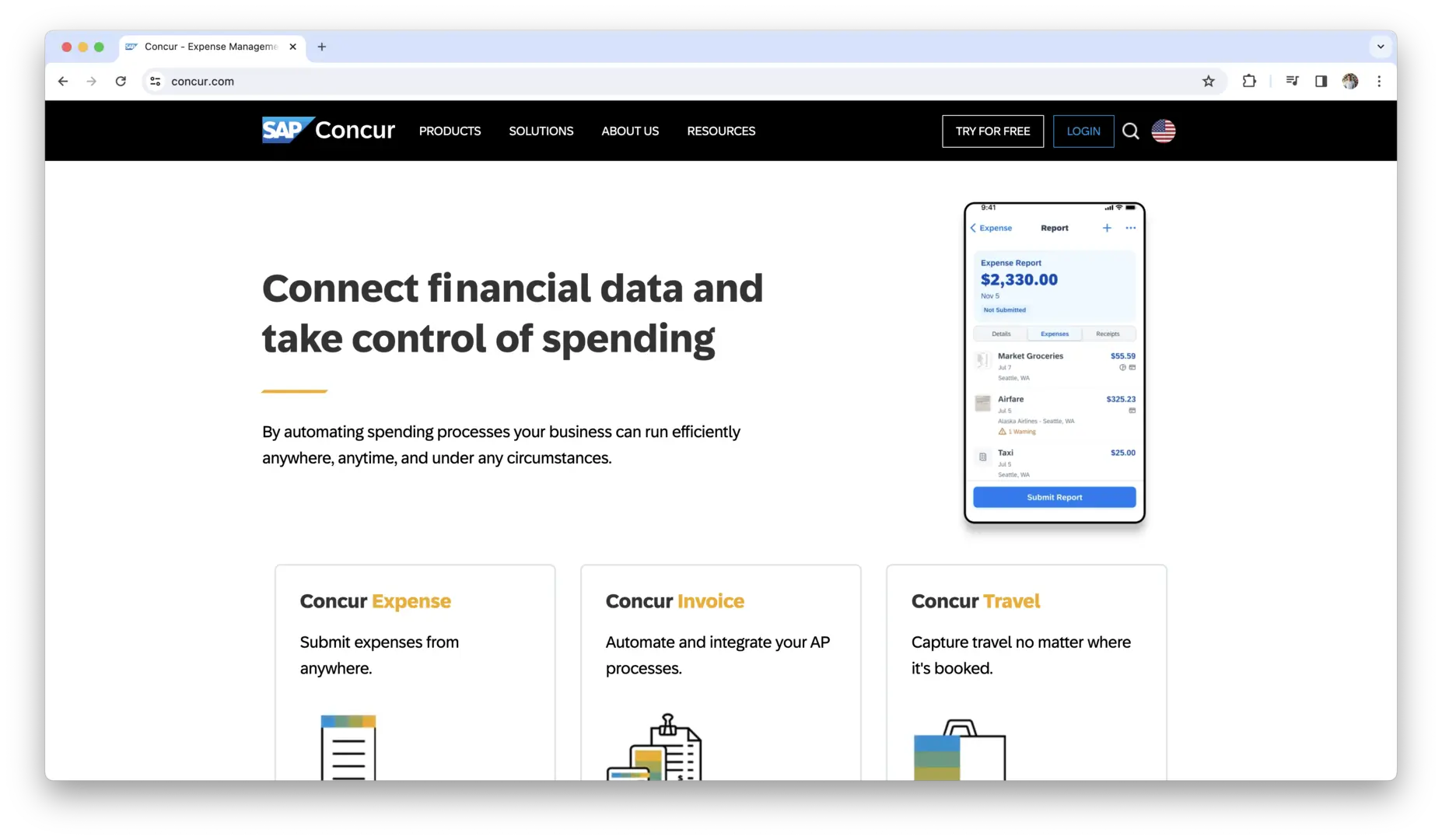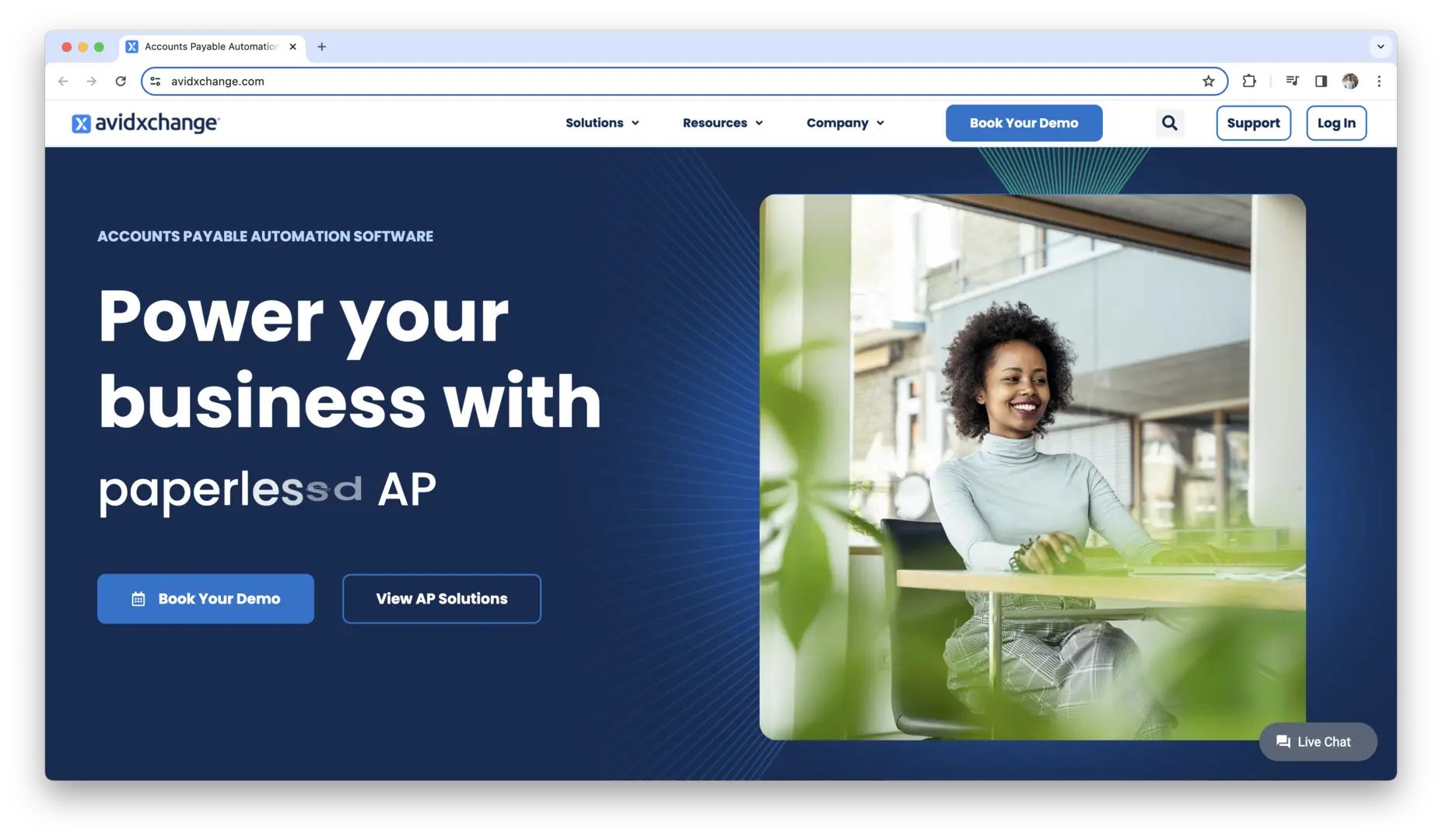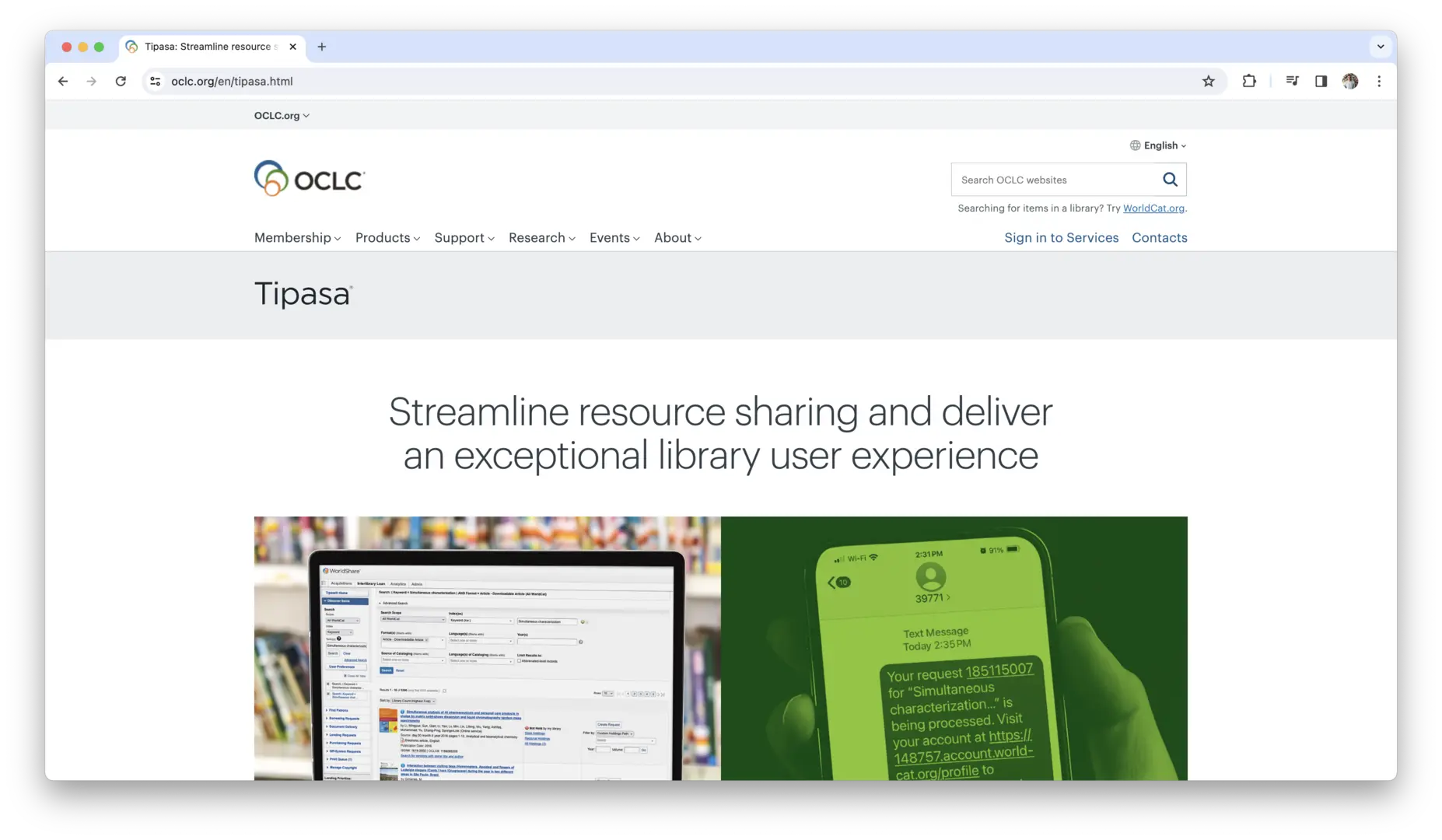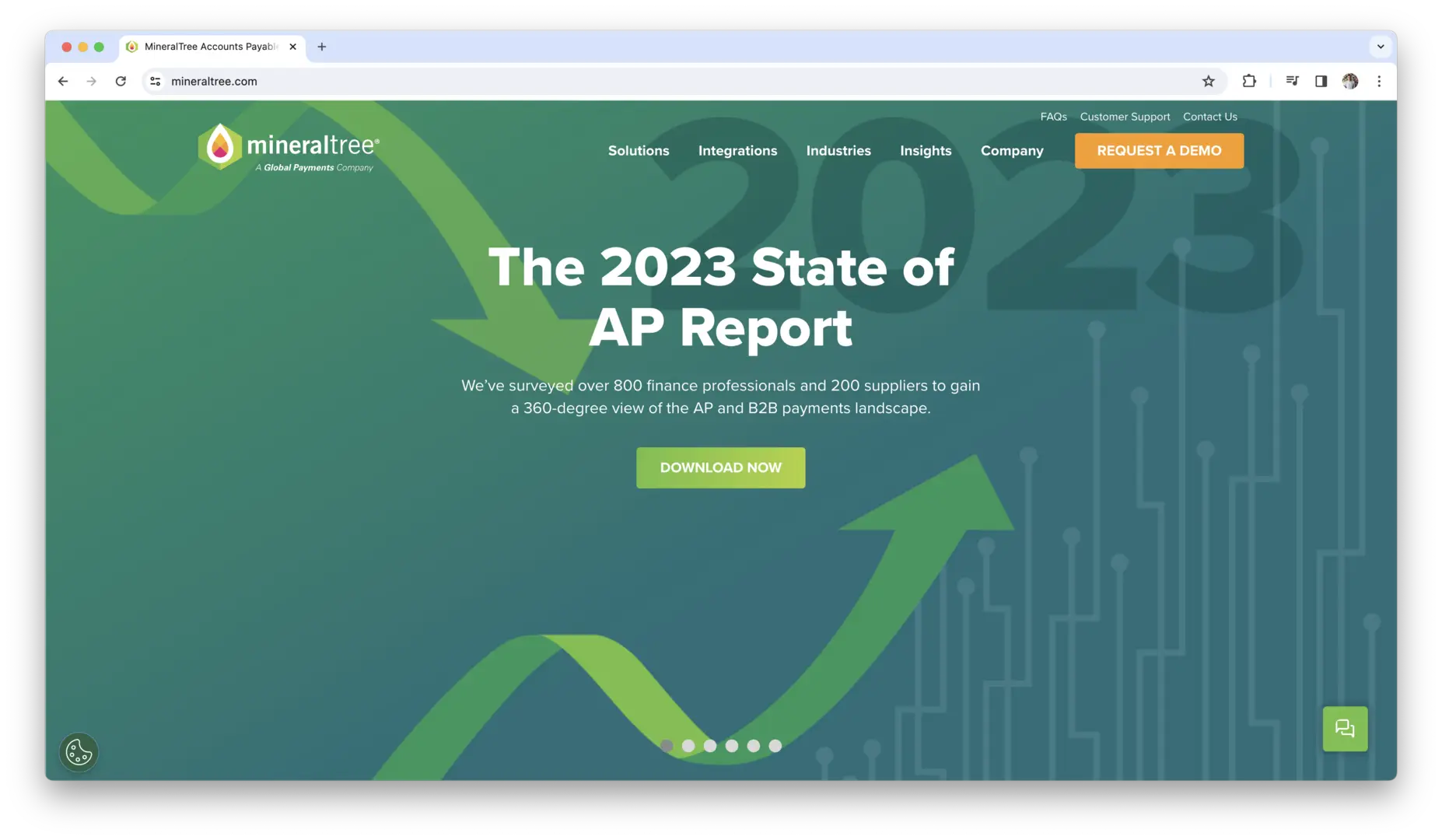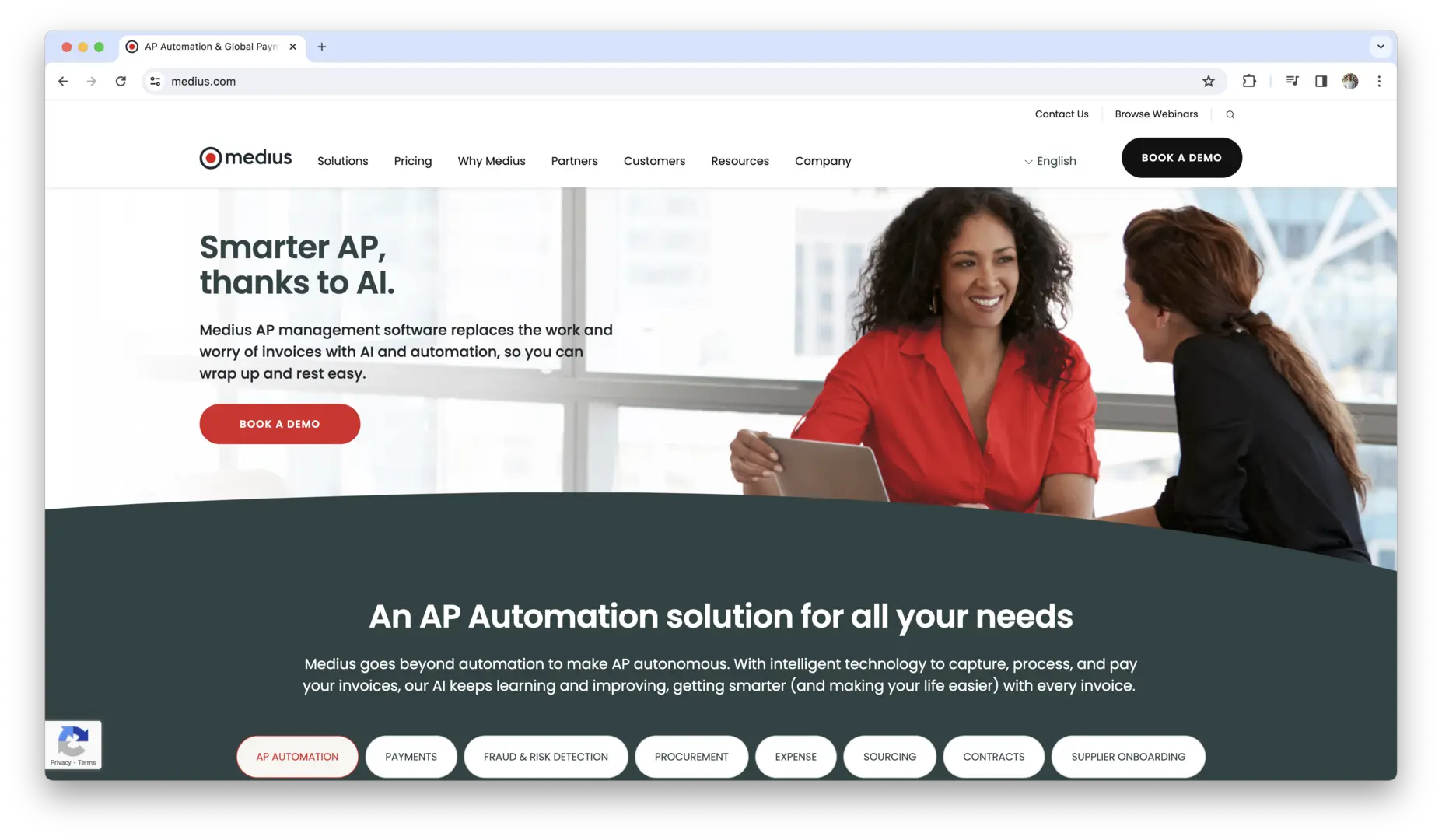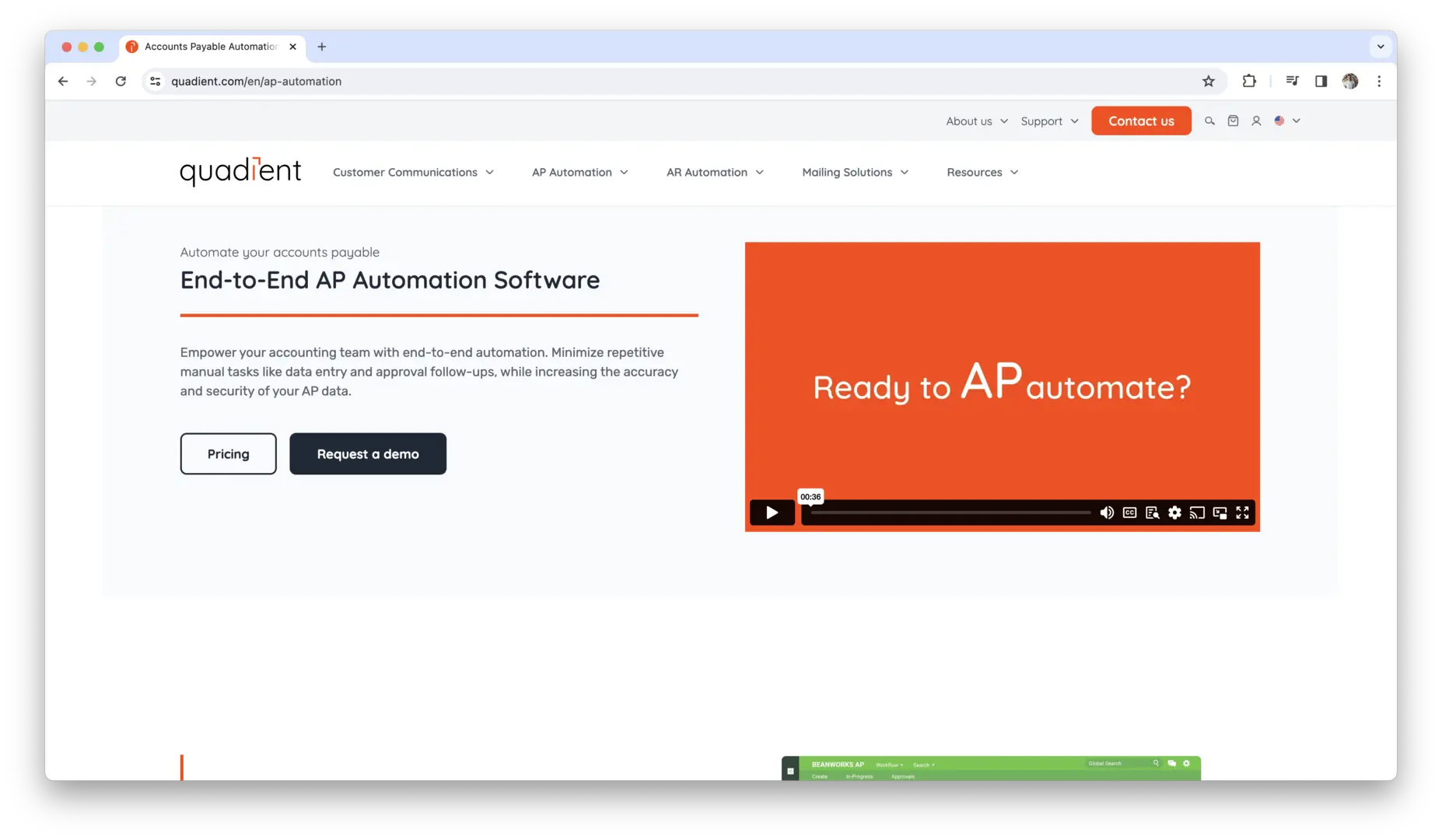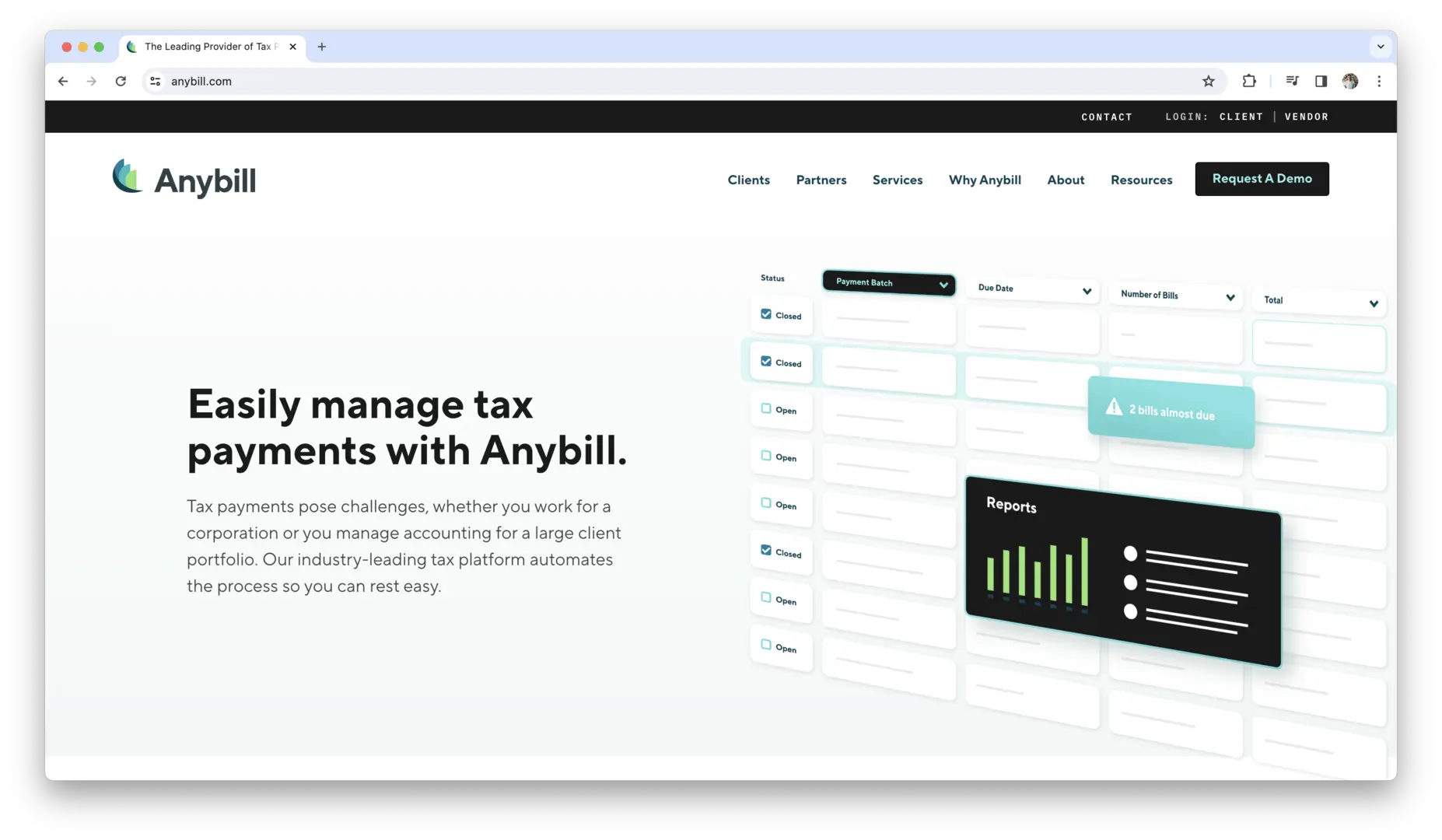Are you looking to streamline your accounts payable processes and drive efficiency in your organization? One of the most effective ways to achieve this is by implementing AP automation software. In today’s fast-paced business environment, manual invoice processing and payment workflows can be time-consuming, error-prone, and inefficient. That’s where AP automation software comes in. By leveraging technology and automation tools, AP automation software simplifies the entire accounts payable process, from invoice capture to payment execution. It eliminates manual data entry, reduces processing times, and improves accuracy, allowing your finance team to focus on strategic initiatives rather than tedious administrative tasks.
In this guide, we’ll explore the top AP automation software solutions available in the market, their key features, benefits, and how they can transform your AP operations for the better. Whether you’re a small business or a large enterprise, finding the right AP automation software can help you streamline workflows, optimize cash flow management, and drive cost savings.
What is Accounts Payable Automation?
Accounts Payable (AP) automation refers to the use of technology and software solutions to streamline and optimize the accounts payable process within an organization. The purpose of AP automation is to digitize and automate the various tasks involved in managing invoices, approvals, and payments, ultimately improving efficiency, accuracy, and cost-effectiveness.
With AP automation, manual processes such as paper-based invoice handling, data entry, and manual approval routing are replaced with automated workflows, electronic document management, and integration with other financial systems. This allows organizations to eliminate manual errors, reduce processing times, enhance visibility and control over the AP process, and optimize cash flow management.
Evolution of Accounts Payable Processes
The accounts payable process has evolved significantly over the years, driven by advancements in technology and changes in business practices. Historically, AP processes were largely manual, paper-based, and time-consuming. Invoices were received via mail, manually entered into accounting systems, and routed for approval through physical paperwork.
However, with the advent of computers, software, and the internet, AP processes began to undergo digital transformation. The introduction of electronic invoicing (e-invoicing), document imaging, and workflow automation solutions revolutionized the way invoices were managed and processed.
Today, AP automation has reached new heights with the integration of artificial intelligence (AI), machine learning (ML), and robotic process automation (RPA) technologies. These advanced solutions enable organizations to automate repetitive tasks, extract data from invoices using optical character recognition (OCR), and intelligently route invoices for approval based on predefined rules and criteria.
Advantages of Implementing AP Automation Software
Implementing AP automation software offers a multitude of benefits for organizations across industries. Some of the key advantages include:
- Increased Efficiency: AP automation streamlines manual processes, reduces paperwork, and accelerates invoice processing and payment cycles, leading to significant time savings and productivity gains.
- Improved Accuracy: By automating data entry and validation tasks, AP automation minimizes the risk of human error, ensuring greater accuracy in financial records and reducing the likelihood of late payments or discrepancies.
- Enhanced Visibility and Control: AP automation provides real-time visibility into the status of invoices, approvals, and payments, allowing organizations to track and monitor the entire AP process from start to finish. This visibility enables better decision-making, improves cash flow forecasting, and strengthens internal controls.
- Cost Savings: By eliminating manual tasks, reducing errors, and optimizing workflows, AP automation helps organizations lower operational costs associated with accounts payable processing. This includes savings on labor, paper, postage, and late payment penalties.
- Better Vendor Relationships: AP automation enables faster invoice processing and payment, resulting in improved vendor satisfaction and stronger supplier relationships. Timely payments can lead to discounts for early payment and help negotiate favorable terms with suppliers.
Overall, implementing AP automation software empowers organizations to modernize their accounts payable processes, drive operational efficiencies, and achieve strategic objectives such as cost reduction, compliance, and improved supplier relationships.
What is AP Automation Software?
Let’s dive deeper into the world of AP automation software to understand its core features, various types, and common integrations.
AP Automation Software Features
AP automation software offers a wide range of features designed to streamline the accounts payable process. Some key functionalities include:
- Invoice Capture: Automated invoice capture allows the software to gather invoices from multiple sources such as emails, scanned documents, and electronic files. This eliminates the need for manual data entry and reduces the risk of errors.
- Data Extraction: Utilizing Optical Character Recognition (OCR) technology, AP automation software extracts relevant data from invoices such as vendor details, invoice numbers, and payment amounts. This data extraction process ensures accuracy and completeness in financial records.
- Workflow Automation: The software automates the entire invoice approval process by routing invoices through predefined workflows based on customizable rules and criteria. This ensures timely approvals and prevents bottlenecks in the AP process.
- Electronic Payments: AP automation software facilitates electronic payments by offering various payment methods such as ACH transfers, virtual cards, and direct deposits. This accelerates the payment process, improves cash flow management, and reduces manual handling of checks.
- Reporting and Analytics: Advanced reporting and analytics capabilities provide insights into AP performance metrics such as invoice processing times, payment accuracy, and vendor relationships. These insights help organizations identify areas for improvement and optimize their AP processes.
Types of AP Automation Solutions
AP automation solutions come in different deployment models, each offering unique advantages and considerations.
Cloud-based AP Automation Software
Cloud-based AP automation software is hosted on remote servers and accessed via the internet. Some key benefits of cloud-based solutions include:
- Scalability: Cloud-based solutions can easily scale up or down to accommodate changes in invoice volume or business growth.
- Accessibility: Since cloud-based software is accessed through a web browser, users can access it from anywhere with an internet connection, making remote work and collaboration more efficient.
- Cost-effectiveness: Cloud-based solutions typically operate on a subscription-based pricing model, which can be more cost-effective for organizations, particularly small to mid-sized businesses.
On-premise AP Automation Software
On-premise AP automation software is installed and maintained on the organization’s local servers. While on-premise solutions offer certain benefits such as:
- Data Control: Organizations have full control over their data and can customize the software to meet specific security and compliance requirements.
- Customization: On-premise solutions offer greater flexibility for customization and integration with existing systems, allowing organizations to tailor the software to their unique needs.
Hybrid AP Automation Solutions
Hybrid AP automation solutions combine elements of both cloud-based and on-premise solutions. This hybrid approach offers the flexibility to leverage the benefits of cloud technology while maintaining control over sensitive data and customization options.
Common Integrations with AP Automation Software
AP automation software integrates seamlessly with various systems and applications to optimize end-to-end financial processes.
ERP Systems
Integration with Enterprise Resource Planning (ERP) systems such as SAP, Oracle, or Microsoft Dynamics enables seamless data exchange between AP automation software and other financial modules. This integration ensures consistency and accuracy across financial data and eliminates the need for manual data entry.
Accounting Software
Integration with accounting software platforms such as QuickBooks, Xero, or Sage streamlines the synchronization of invoice and payment data between AP automation software and accounting systems. This integration simplifies financial reporting, reconciliation, and auditing processes, leading to greater efficiency and accuracy in financial management.
Document Management Systems
Integration with document management systems such as SharePoint, Google Drive, or Box facilitates secure storage, retrieval, and collaboration on invoices and related documents. This integration ensures centralized document management, version control, and audit trails, enhancing compliance and data security in the AP process.
Top AP Automation Software
Choosing the right AP automation software is crucial for maximizing efficiency and streamlining your accounts payable processes. Here, we’ll explore some of the top AP automation software solutions available in the market today.
Sage Intacct
Sage Intacct offers cloud-based financial management software with AP automation capabilities. Its features include automated invoice capture, approval workflows, and integration with ERP systems. Sage Intacct helps organizations streamline AP processes, improve accuracy, and gain insights into financial performance.
Melio
Melio offers a highly flexible and innovative AP automation solution designed to give businesses full control over their cash flow. With Melio, you can manage payments in a way that works best for your business. Whether you’re using ACH transfers, credit cards (even where cards aren’t traditionally accepted), or instant payments, Melio provides the ability to pay vendors quickly and efficiently, both domestically and globally. Its platform supports multiple payment methods, including instant transfers, same-day bank transfers, and even international payments in vendors’ preferred currencies, all from a single interface.
Melio integrates seamlessly with popular accounting platforms like QuickBooks and Xero, enabling automatic syncing of vendors, bills, and payments. The software also simplifies invoice management by allowing you to easily upload, scan, or sync invoices directly into the platform. With features like recurring payments, approval workflows, and the ability to combine payments, Melio helps businesses save valuable time and reduce manual tasks. Whether you’re handling domestic transactions or paying global vendors, Melio provides the flexibility and tools needed to enhance payment efficiency and optimize cash flow management.
Xero
Xero is a cloud-based accounting software that offers AP automation features such as invoice management, bill payments, and expense tracking. With its user-friendly interface and seamless integration with banking and payment platforms, Xero simplifies AP processes for small businesses and accounting professionals.
SAP Ariba
SAP Ariba Spend Management offers a comprehensive suite of cloud-based procurement solutions, including AP automation software. With features such as invoice capture, workflow automation, and electronic payments, SAP Ariba streamlines the entire AP process while providing visibility into spend and supplier relationships.
Coupa
Coupa’s AP automation solution is part of its broader spend management platform, offering end-to-end visibility and control over the procurement lifecycle. Coupa’s intuitive interface, AI-powered insights, and seamless integrations with ERP systems make it a popular choice for organizations looking to digitize their AP processes.
Oracle NetSuite
Oracle NetSuite Accounts Payable module provides a comprehensive solution for managing invoices, approvals, and payments. With features such as automated matching, vendor portals, and multicurrency support, NetSuite helps organizations streamline AP operations and improve accuracy and compliance.
Basware
Basware offers a cloud-based AP automation solution designed to simplify invoice processing, optimize cash flow, and strengthen supplier relationships. Basware’s advanced capabilities, including machine learning-based invoice capture and analytics-driven insights, make it a preferred choice for organizations seeking to drive efficiency and innovation in their AP processes.
Tipalti
Tipalti specializes in global AP automation, helping organizations manage cross-border payments, compliance, and tax regulations seamlessly. With features such as supplier onboarding, tax compliance validation, and payment reconciliation, Tipalti enables organizations to automate and streamline their AP workflows while ensuring regulatory compliance.
BILL
BILL offers a cloud-based platform for automating accounts payable, accounts receivable, and cash flow management. With features such as intelligent invoice capture, automated approvals, and seamless integration with accounting software, Bill.com simplifies AP processes and improves visibility and control over financial operations.
Yooz
Yooz provides cloud-based AP automation software that automates invoice processing, approval workflows, and payment execution. With its user-friendly interface, customizable workflows, and AI-powered data extraction capabilities, Yooz helps organizations streamline AP processes and achieve greater efficiency and accuracy.
FreshBooks
FreshBooks is a cloud-based accounting software that offers AP automation features such as expense tracking, invoice management, and online payments. While primarily designed for small businesses and freelancers, FreshBooks provides simple yet effective AP automation solutions for organizations with basic invoicing and payment needs.
Concur
Concur, part of SAP’s business suite, offers AP automation software that simplifies invoice processing, expense management, and vendor payments. With features such as mobile receipt capture, automated expense reporting, and built-in compliance controls, Concur helps organizations streamline AP processes and improve visibility into spend.
AvidXchange
AvidXchange provides cloud-based AP automation solutions tailored for mid-sized businesses and enterprises. Its features include automated invoice capture, customizable approval workflows, and electronic payments, all aimed at optimizing AP processes, reducing costs, and enhancing supplier relationships.
Procurify
Procurify offers AP automation software focused on procurement and spend management. With features such as purchase order creation, receipt matching, and budget tracking, Procurify helps organizations streamline AP processes, control spending, and gain insights into purchasing patterns and vendor performance.
Tipasa
OCLC Tipasa provides AP automation solutions designed specifically for higher education institutions. Its features include invoice processing, approval workflows, and integration with financial systems commonly used in academia. Tipasa helps universities and colleges automate AP processes while ensuring compliance with regulatory requirements.
MineralTree
MineralTree offers AP automation software tailored for small and mid-sized businesses. Its features include invoice capture, approval workflows, and integration with accounting software such as QuickBooks and NetSuite. MineralTree simplifies AP processes, improves accuracy, and enhances control over cash flow management.
Medius
Medius offers cloud-based AP automation solutions designed to streamline invoice processing, optimize payment workflows, and improve visibility into financial data. With features such as AI-driven invoice matching, supplier collaboration portals, and real-time analytics, Medius helps organizations achieve greater efficiency and control over AP processes.
Quadient
Quadient AP by Beanworks provides AP automation software that automates invoice processing, approval workflows, and payment execution. Its features include intelligent data capture, customizable approval chains, and integration with ERP and accounting systems. Quadient helps organizations reduce manual tasks, eliminate errors, and accelerate the AP cycle.
Anybill
Anybill provides AP automation solutions that automate invoice processing, approval workflows, and payment execution. With features such as intelligent data extraction, customizable approval rules, and compliance controls, Anybill helps organizations optimize AP processes, reduce costs, and mitigate risks.
These are just a few examples of the top AP automation software solutions available in the market. When evaluating AP automation software, consider factors such as features, scalability, integration capabilities, user experience, and pricing to choose the solution that best fits your organization’s needs and objectives.
How to Choose AP Automation Software?
When selecting the right AP automation software for your organization, several key considerations should guide your decision-making process. Let’s explore these considerations in detail to ensure you make an informed choice.
Business Requirements Assessment
Understanding your organization’s specific needs and objectives is essential before embarking on the selection process. Conduct a thorough assessment to identify:
- Invoice Volume: Determine the average number of invoices processed monthly or annually to ensure the chosen software can handle your organization’s workload efficiently.
- Workflow Complexity: Assess the complexity of your invoice approval workflows and customization requirements. Consider factors such as multi-level approvals, exceptions handling, and integration with existing systems.
- Integration Requirements: Identify the systems and applications that need to integrate with the AP automation software. This includes ERP systems, accounting software, document management systems, and any other relevant platforms.
- Regulatory Compliance: Determine the regulatory requirements your organization must adhere to, such as GDPR, HIPAA, or SOX. Ensure that the selected software complies with these regulations to avoid compliance issues and penalties.
Scalability and Flexibility
Choose AP automation software that can grow and evolve with your organization over time. Consider the following factors related to scalability and flexibility:
- Scalability: Ensure the software can handle increasing invoice volumes, additional users, and new features as your organization grows. Scalability is particularly crucial for rapidly expanding businesses or those with seasonal fluctuations in invoice volume.
- Customization: Look for software that offers flexible customization options to tailor workflows, approval rules, and reporting capabilities to your organization’s unique needs. The ability to adapt the software to your specific requirements is essential for maximizing its effectiveness.
Security and Compliance
Security and compliance are paramount when handling sensitive financial information. Evaluate the following aspects related to security and compliance:
- Data Security: Verify that the AP automation software employs robust security measures to protect your organization’s data from unauthorized access, breaches, or cyber threats. This includes encryption, access controls, and audit trails to safeguard sensitive information.
- Compliance Standards: Ensure the software complies with relevant regulatory standards and industry best practices for data protection and privacy. Look for certifications such as SOC 2, ISO 27001, or PCI DSS, which demonstrate the vendor’s commitment to maintaining high security standards.
User Experience and Interface
An intuitive user interface and seamless user experience are essential for driving user adoption and productivity. Consider the following factors related to user experience:
- Ease of Use: Choose software with a user-friendly interface and intuitive navigation to minimize training time and support user adoption. Features such as drag-and-drop functionality, customizable dashboards, and context-sensitive help resources can enhance usability.
- Mobile Accessibility: Look for AP automation software that offers mobile accessibility, allowing users to access and approve invoices on-the-go from their smartphones or tablets. This flexibility improves responsiveness and ensures timely invoice processing, even when users are away from their desks.
Pricing Models and Total Cost of Ownership
Evaluate the pricing models and total cost of ownership (TCO) of AP automation software to ensure it aligns with your budget and provides long-term value. Consider the following aspects:
- Subscription vs. Perpetual Licensing: Compare subscription-based pricing models with perpetual licensing options to determine which best suits your organization’s financial preferences and cash flow requirements.
- Implementation Costs: Factor in implementation costs such as setup fees, customization, data migration, training, and ongoing support expenses. Be sure to obtain detailed pricing quotes from vendors to accurately assess the total cost of implementation.
- ROI Potential: Calculate the potential return on investment (ROI) of the AP automation software based on projected time and cost savings, error reduction, and productivity gains. Consider both short-term and long-term benefits to determine the software’s overall value proposition for your organization.
How to Implement AP Automation Software?
Implementing AP automation software is a crucial step in optimizing your accounts payable processes. Let’s explore the various stages of implementation in detail to ensure a successful transition.
Planning and Preparation
Effective planning and preparation lay the foundation for a smooth implementation process. Consider the following steps:
- Define Project Scope: Clearly outline the scope, objectives, and timeline of the implementation project. Identify key stakeholders and establish communication channels to ensure everyone is aligned with the project goals.
- Assess Current Processes: Conduct a thorough assessment of your existing accounts payable processes to identify inefficiencies, pain points, and areas for improvement. This analysis will inform the design of your automated workflows.
- Select Implementation Team: Assemble a cross-functional implementation team comprising representatives from finance, IT, procurement, and other relevant departments. Assign roles and responsibilities to team members based on their expertise and involvement in the project.
Data Migration and Integration
Data migration and integration are critical aspects of implementing AP automation software. Follow these best practices to ensure a seamless transition:
- Cleanse and Validate Data: Before migrating data to the new system, cleanse and validate it to ensure accuracy and completeness. Remove duplicates, standardize formats, and resolve any inconsistencies in vendor records and invoice data.
- Map Data Fields: Map data fields between your existing systems and the AP automation software to ensure seamless integration and data transfer. Identify corresponding fields for vendor information, invoice details, payment terms, and other relevant data points.
- Conduct Integration Testing: Test integrations with ERP systems, accounting software, and other third-party applications to verify data accuracy and system compatibility. Address any issues or discrepancies identified during testing before proceeding with the full implementation.
Training and Adoption Strategies
User training and adoption strategies are essential for ensuring that employees embrace the new AP automation software. Consider the following approaches:
- Provide Comprehensive Training: Offer comprehensive training sessions for end-users to familiarize them with the features, functionalities, and workflows of the new software. Tailor training materials to different user roles and skill levels to ensure effective learning.
- Promote Change Management: Implement change management strategies to overcome resistance to change and foster a culture of acceptance and enthusiasm for the new AP automation software. Communicate the benefits of automation and involve employees in the decision-making process.
- Offer Ongoing Support: Provide ongoing support and resources to help users navigate any challenges or questions they encounter during the transition period. Offer access to user manuals, FAQs, and helpdesk support to address user needs promptly.
Post-Implementation Support and Maintenance
Once the AP automation software is up and running, it’s essential to provide continued support and maintenance to maximize its effectiveness. Consider the following strategies:
- Monitor Performance Metrics: Continuously monitor performance metrics such as invoice processing times, error rates, and user satisfaction levels to identify areas for improvement and optimization. Use these insights to refine workflows and address any issues proactively.
- Stay Updated: Keep the AP automation software up-to-date with the latest patches, updates, and enhancements released by the vendor. Regularly review and apply software updates to ensure optimal performance, security, and compatibility with other systems.
- Gather Feedback: Solicit feedback from end-users regarding their experiences with the AP automation software. Use feedback mechanisms such as surveys, focus groups, or one-on-one meetings to gather insights and suggestions for improving usability and functionality.
- Continuous Improvement: Continuously seek opportunities for process improvement and optimization. Leverage analytics and insights from the AP automation software to identify bottlenecks, inefficiencies, and areas where automation can further streamline operations. Regularly review and refine workflows to drive ongoing efficiency gains.
Conclusion
Implementing top AP automation software can revolutionize the way your organization manages accounts payable processes. By leveraging technology to automate repetitive tasks, streamline workflows, and improve accuracy, these software solutions offer numerous benefits, including increased efficiency, reduced costs, and enhanced visibility into financial operations. Whether you’re a small business looking to simplify invoice processing or a large enterprise aiming to optimize AP workflows, there’s a solution out there to meet your needs.
Furthermore, the evolution of AP automation software continues to drive innovation in the finance industry. With advancements in artificial intelligence, machine learning, and data analytics, these solutions are becoming increasingly intelligent, predictive, and adaptable to changing business needs. By staying informed about the latest developments and continuously evaluating and optimizing your AP automation strategy, you can position your organization for long-term success and competitiveness in today’s dynamic marketplace.
Get Started With a Prebuilt Template!
Looking to streamline your business financial modeling process with a prebuilt customizable template? Say goodbye to the hassle of building a financial model from scratch and get started right away with one of our premium templates.
- Save time with no need to create a financial model from scratch.
- Reduce errors with prebuilt formulas and calculations.
- Customize to your needs by adding/deleting sections and adjusting formulas.
- Automatically calculate key metrics for valuable insights.
- Make informed decisions about your strategy and goals with a clear picture of your business performance and financial health.

